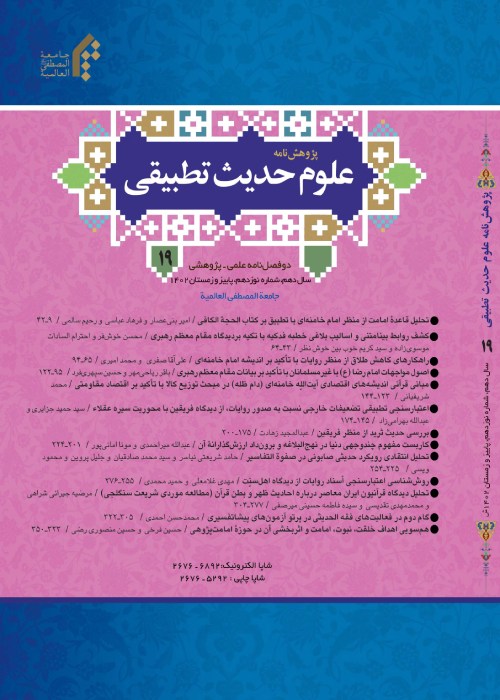The Relationship between the Narration of “Al-Nisa Ayyun wa Awrah” [«النساء عی و عوره»] and the Obligation of Religious Hijab until the Fifth Century
The narration: Oالنساء عی و عوره فاستروا عیهن بالسکوت واستروا عوراتهن بالبیوت</strong>P (The women are incapable of expressing themselves and are genital [awrat], so be silent in the face of the inability of their words and cover their private organs by preserving in houses.) has been narrated in Shia and Sunni resources. The narration refers to the maximum hijab and housekeeping/ home-living of women as some thinkers think so. Although this narration is not the main argument for the religious hijab and there are other authentic arguments from the Quran, Sunnah, reason, and consensus on the religious hijab, it is necessary to study the narrative in terms of document and text, as well as the historical evolution of the discovery of truth, refining the data related to women in Islamic sources and presenting a proper image of women in Islam to the international community. The present research seeks to critique the mentioned narration with the method of historical analysis, accurate comprehension of hadith [fiqh al-hadith] and evolution studies, and its historical developments in terms of document and content up to the fifth century. The choice of the mentioned period of timing is due to the significant evolution of the hadith from the third to the fifth century and the repetition of information in the sources from the fifth century onwards. According to the findings of the present study, this narration has been recorded in five Shiite sources up to the fifth century, of which four are weak and one is good as documental studies; However, due to the contradiction with the Quran, the tradition and conduct of the Ahl al-Bayt (A.S) it has not been among the scientific authentic certainties and reliable while the role of Zaydiyya in its entrance into the sources of the Imamia is prominent. No report in Sunni sources cites this narration to the Prophet (P) and it is narrated by some companions such as Ibn Mas’ud, Umar ibn al-Khattab, and Ibn Abbas, who had an inverted growth until the fifth century. On the other hand, the text of the narration is inconsistent and even contradictory with the Quran, the Prophetic conduct and sayings, and scientific facts. The historical contexts of the formation and growth of this hadith and similar hadiths in which women are condemned show the history of these changes in the public culture and literature of the pre-Islamic era and its promotion by Kufis and Basrians.
- حق عضویت دریافتی صرف حمایت از نشریات عضو و نگهداری، تکمیل و توسعه مگیران میشود.
- پرداخت حق اشتراک و دانلود مقالات اجازه بازنشر آن در سایر رسانههای چاپی و دیجیتال را به کاربر نمیدهد.


